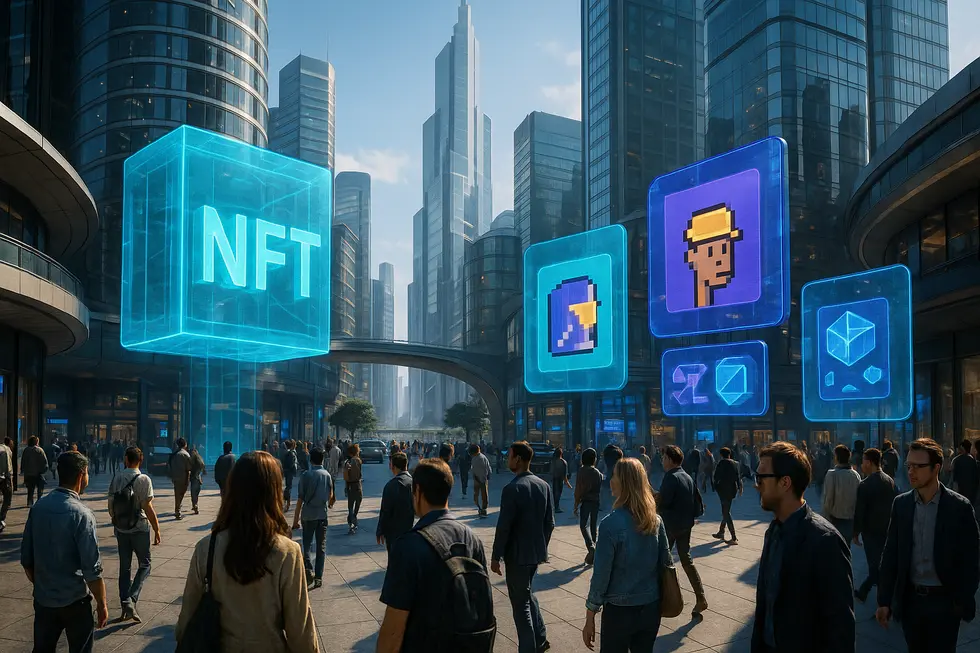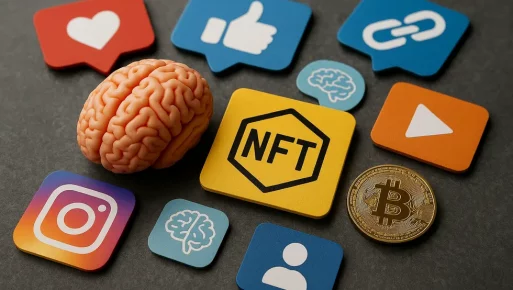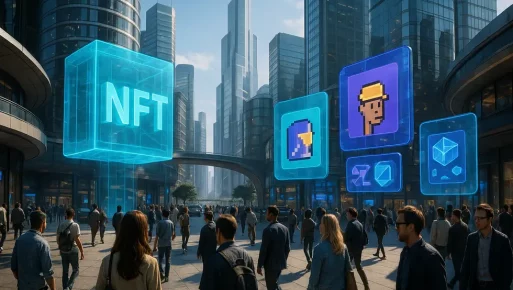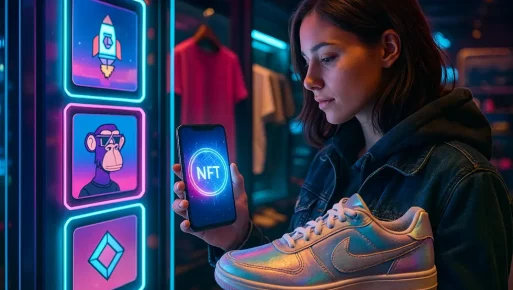Imagine a world where everything—from a piece of art to your digital avatar in a video game—exists as a token on the blockchain. This intricate tapestry of tokenized assets is transforming how we perceive ownership and value. Far beyond temporal art speculation, this new horizon embraces practical implementations across sectors, redefining identity, exchange, and enterprise. Discover how NFT marketplaces and digital ownership are not just evolving but revolutionizing the digital landscape. Each chapter delves deeper into this shift, offering a glimpse into how this could mean a more interconnected and equitable global economy.
The Tokenization Movement: Reimagining Ownership and Economy
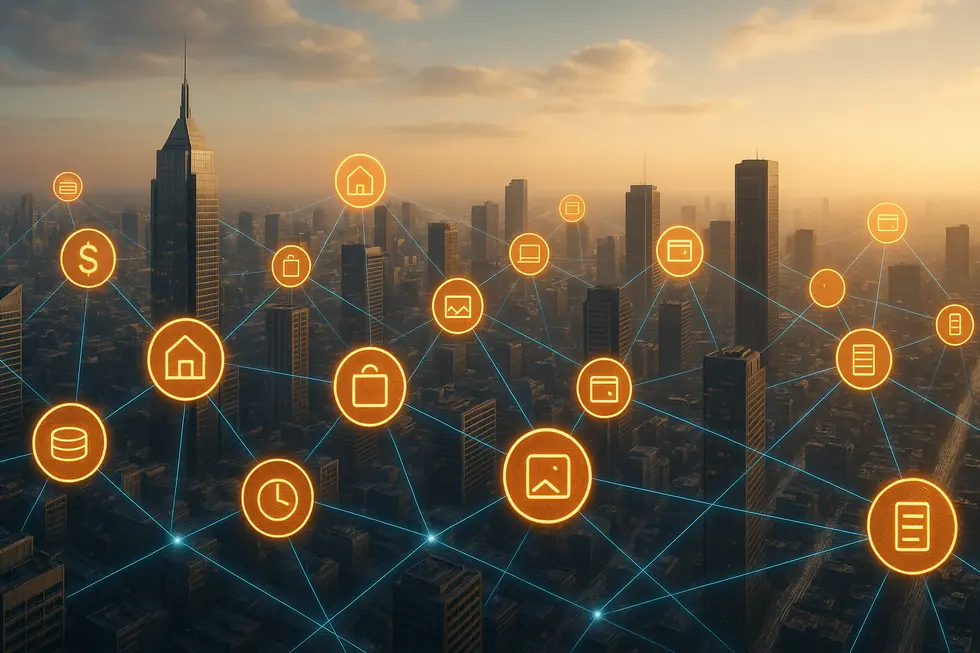
Tokenization is reshaping global finance by converting traditional assets into digital tokens on blockchain platforms. This paradigm shift dissolves the boundaries between physical and digital finance, paving the way for an economy which is more inclusive and transparent. Asset tokenization goes beyond fintech’s initial use in protecting data, creating tradeable, programmable representations of real-world assets. This transparency, coupled with blockchain’s immutability, is revolutionizing markets. Source
The range of assets that can be tokenized is vast, including real estate, commodities, bonds, and intellectual property. This versatility in asset tokenization democratizes investment opportunities, allowing fractional ownership and continuous trading. By 2030, analysts forecast a growth potential reaching up to $5 trillion, a clear testament to its impact. Institutional platforms like Securitize and Fireblocks are driving this progress, ensuring that custody and compliance are maintained for regulated investors. This evolution is not merely financial; it signifies a transformation to a digital-first approach to ownership. Source
Navigating the Expanding Realm of NFT Marketplaces and Digital Ownership
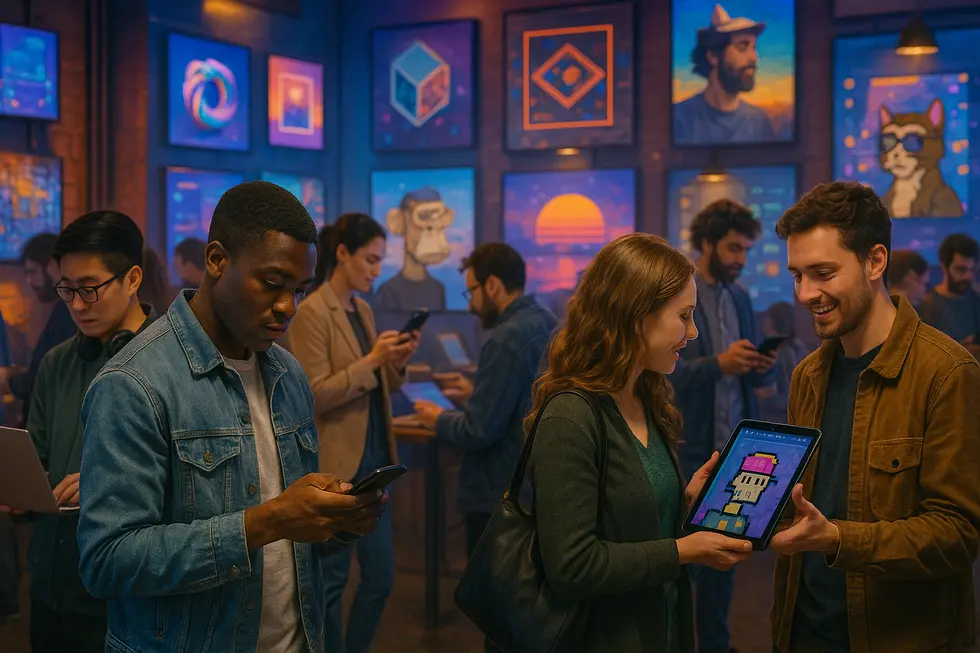
As the world hurtles toward comprehensive tokenization, navigating NFT marketplaces and understanding digital ownership have become essential skills. These platforms act as hybrid spaces, merging the roles of art galleries, auction houses, and retail outlets in a digital format. Pioneering platforms like OpenSea, Rarible, and Foundation offer unique features, fees, and blockchain support, such as Ethereum and Solana, accommodating diverse user preferences.
An increasing trend in 2025-2026 is cross-chain compatibility, which allows seamless interactions across various blockchains, minimizing fees and enhancing user experience. Integrating DeFi elements, such as staking and yield farming, transforms NFTs from static assets into dynamic financial tools, while AI enhances marketplace functionality through personalized recommendations and fraud detection.
NFTs provide secure, immutable digital ownership beyond digital art, covering gaming items, real estate, and more. The tokenization of assets, supported by major financial institutions, democratizes access and liquidity. Navigating these marketplaces successfully involves understanding the types of NFTs, blockchain compatibility, and keeping abreast of technological advancements like AI. Embracing this transformation not only requires a thorough understanding of evolving regulations but also offers a glimpse into the new economic frontier. For more insights, explore how NFTs are reshaping society.
Unlocking True Ownership: Gaming in the Age of Tokenization
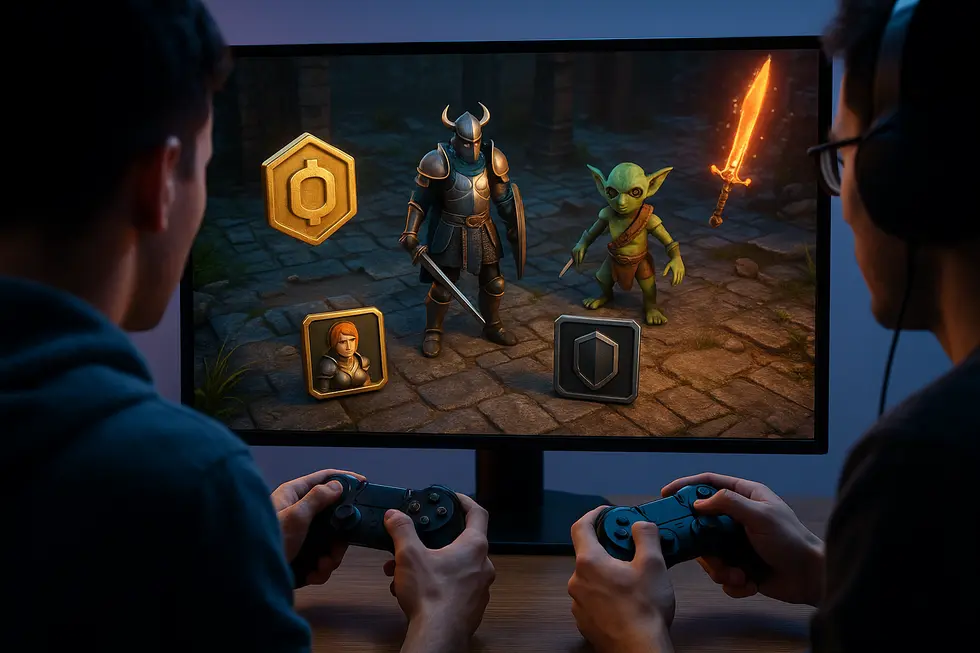
The gaming world is undergoing a profound metamorphosis through tokenization, providing gamers with true and verifiable ownership of in-game assets. By transforming items like skins, weapons, and collectibles into blockchain-based tokens, players gain independence from single gaming platforms and the ability to trade or sell across different ecosystems, enhancing asset portability and transparency.
Traditional gaming economies have long suffered from limitations of platform lock-ins and license-based ownership, leaving gamers without true leverage. Tokenization transcends these barriers by embedding digital certificates of authenticity on the blockchain. This ensures that ownership is irrefutable and assets remain operable across various platforms, paving the way for economic models such as play-to-earn (P2E). Players can now earn real-world value through innovative tokenomics, including staking and deflationary mechanisms.
Within this tokenized environment, games like Illuvium and MapleStory Universe exemplify the shift towards player-controlled, interoperable assets. These developments are revolutionizing the gaming landscape, turning once-static virtual possessions into dynamic opportunities for financial gain and community engagement. This transformation is forging a vibrant economy where players have both control and a financial stake in their assets. For a deeper understanding of tokenized gaming assets, see Tokenized Gaming Assets Explained.
Navigating the Intricacies of Digital Inheritance in a Tokenized World
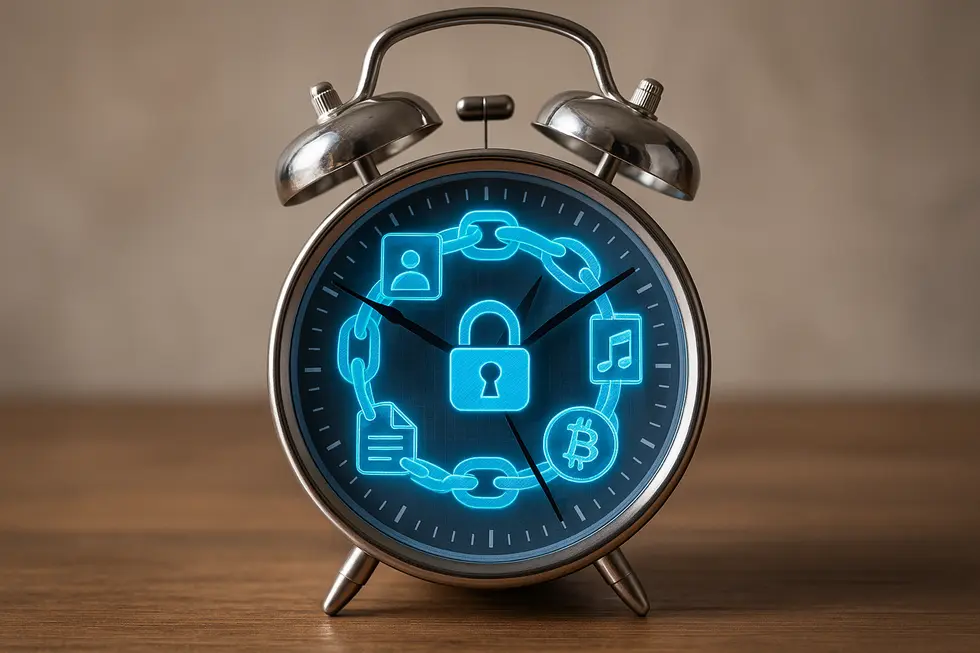
In the rapidly evolving world of tokenization, digital inheritance presents unprecedented complexities. As ownership extends beyond physical assets into digital realms such as cryptocurrencies and NFTs, families and institutions grapple with ensuring these assets seamlessly transfer across generations. Private key management poses a significant challenge. Unlike traditional assets safeguarded by banks, digital assets require cryptographic credentials for access, making them vulnerable to loss if keys are mismanaged.
Technological innovations, including “death protocols” and smart contracts, attempt to automate asset transfers upon conditions like death. While these solutions offer potential, they introduce risks due to immutability and reliance on external data sources, exemplifying the intricate balance between automation and security. The divergence between custodial and non-custodial digital assets further complicates inheritance, with each presenting unique challenges in estate planning and asset control.
The legal landscape remains fragmented, lacking cohesive global regulations; laws vary by jurisdiction, creating uncertainty in estate planning. Tax complications add another layer of complexity, as existing estate tax frameworks struggle to accommodate the nuances of tokenized assets. The urgency for coherent legal, technical, and regulatory solutions grows as the tokenized economy expands, ensuring that digital wealth can be effectively managed and inherited.
For comprehensive insight into how brands navigate the NFT ecosystem, see how brands enter the NFT game.
Revolutionizing Assets: AI-Driven Intelligent NFTs in a Tokenized World
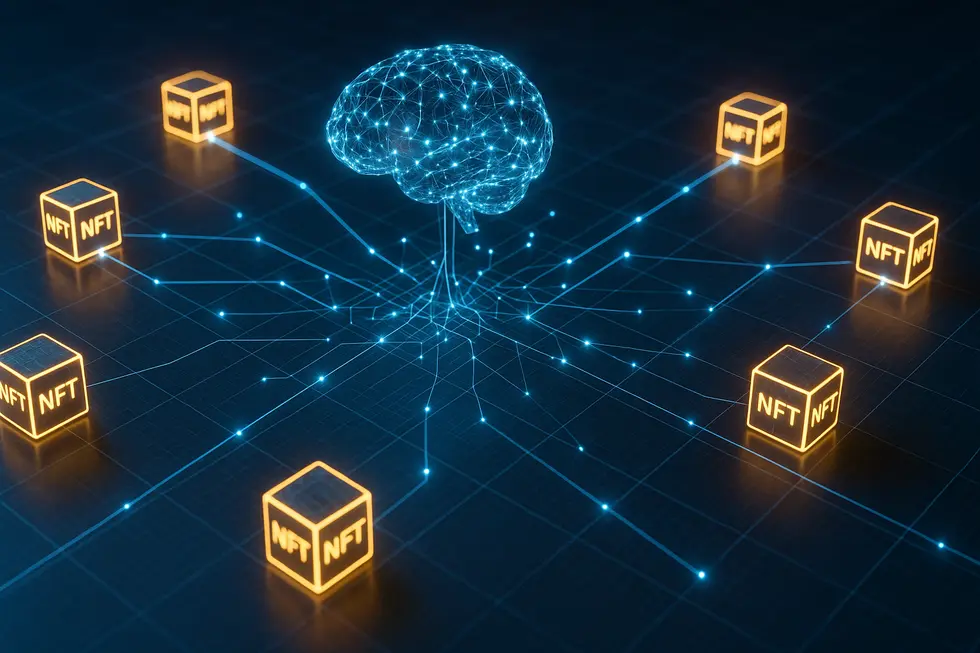
The integration of artificial intelligence into the tokenization landscape is redefining the essence of digital ownership and asset management. Intelligent NFTs (iNFTs) represent this revolution by transforming static digital assets into dynamic entities capable of evolving and adapting autonomously. Utilizing standards like ERC-7857, iNFTs maintain self-updating metadata, predicting market values and fostering a new dimension of “living” digital assets.
Beyond their traditional role in digital collectibles, AI-powered NFTs unlock new creative avenues through the tokenization of synthetic media, such as AI-generated avatars and voices, providing a fresh monetization channel for creators. Moreover, AI’s capacity for data analysis is crucial in the tokenization of real-world assets, ensuring optimal transaction efficiency and liquidity.
By 2035, AI-driven tokenization is expected to revolutionize global markets, making assets more accessible through programmability and fractional ownership. This emergent system, supported by sophisticated AI models, manages valuation and governance with unprecedented precision, enhancing compliance and adaptability across decentralized environments (source). These advancements mark a pivotal shift towards an interconnected global economy, where AI and tokenization drive innovation and value creation.
Reimagining Ownership: NFTs and the Tokenization Revolution
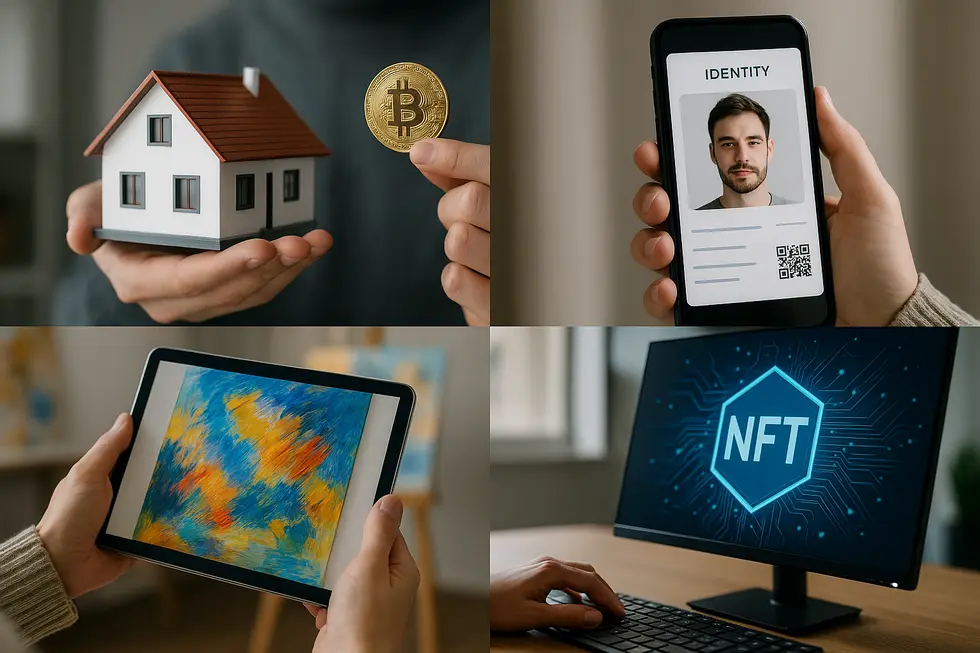
The paradigm shift introduced by NFTs and tokenization is transforming our understanding of ownership, authenticity, and trade. By harnessing blockchain technology, non-fungible tokens (NFTs) offer indisputable certificates of ownership and authenticity for unique digital items such as art, music, and collectibles. These certificates are immutable and traceable, ensuring protection against duplication and fraud. Extending this concept, tokenization allows assets typically beyond the average investor’s reach—like real estate and private credit—to be broken down into smaller, tradable fractions. This democratizes access, providing new liquidity and inclusivity in previously exclusive markets.
Moreover, built-in smart contracts automate transactions, ensuring seamless compliance and reducing potential errors and fraud. As the utility of NFTs expands beyond collectibles, new domains like gaming, music rights, and even real estate are embracing this innovation. The blockchain acts as the backbone, offering transparency and security, with platforms like Ethereum leading in the development of NFT standards. This transformation is reshaping digital ownership, paving the way for novel financial and legal structures in our increasingly digital economy. For more on how NFTs prevent counterfeiting, see here.
Final thoughts
The advent of a fully tokenized world beckons an era where value is not confined by traditional boundaries. As NFT marketplaces evolve and digital ownership permeates various aspects of life, this movement heralds a more interconnected, transparent, and equitable digital economy. Through overcoming challenges in asset inheritance and embracing AI with intelligent NFTs, we are poised for profound shifts in how we define value, ownership, and identity. The transformation is more than digital; it underlines a fundamental change in understanding assets and opportunities for collaboration worldwide.
About us
Monbase Global is a strategic partner of OpenLive Group, focused on expanding the reach and utility of blockchain and digital asset applications across international markets. As a core collaborator in the Monbase NFT ecosystem, Monbase Global plays a vital role in driving cross-border partnerships, investment strategies, and user adoption beyond Vietnam. With a vision to build a decentralized digital economy rooted in trust and innovation, Monbase Global supports the international growth of NFTs, digital collectibles, and the use of the MBC token across various platforms. The partnership between Monbase Global and OpenLive Group brings together local insight and global ambition—creating real-world value for creators, collectors, and businesses alike.
🌐 Join the Monbase NFT community and stay ahead of the Web3 curve.
💬 Follow us on Telegram, Twitter, or Discord for drops and updates!
Facebook | X (formerly Twitter) | Telegram announcement | Telegram community


